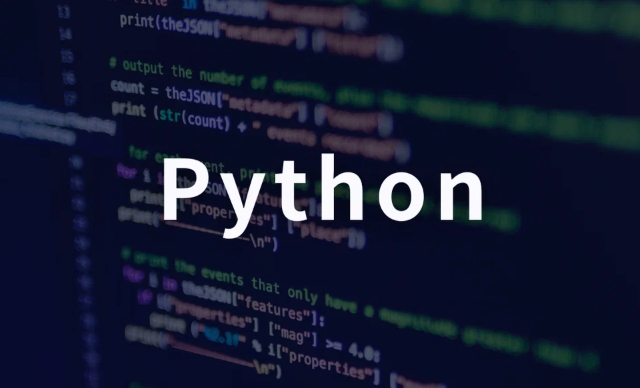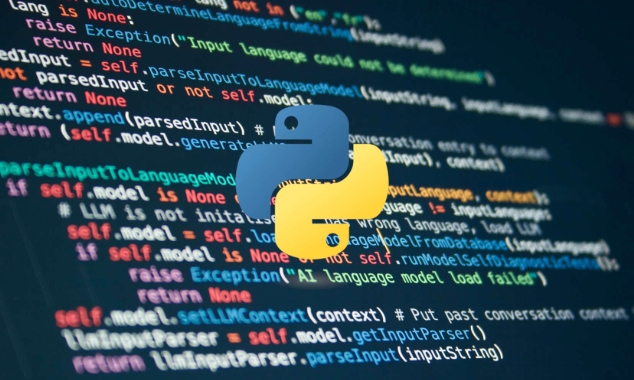python dictionary example
Python dictionary is used to store key-value pairs, which can be created through curly braces or dict(). 1. Create: initialize with {} or dict(); 2. Access: Get the value through the key or get() method, the latter can set the default value; 3. Modify and add: directly assign values to modify or add key-value pairs; 4. Delete: Use del or pop() to remove key-value pairs, and pop() can return deleted values; 5. Traversal: Use for loops to combine keys(), values() or items() methods; 6. Application: For example, counting word frequency is calculated, counting is achieved through loops and get(). Dictionary is widely used in JSON processing, cache and configuration management scenarios. Mastering its addition, deletion, modification, and traversal operations can meet most actual needs.

The Python dictionary is a very common data structure used to store key-value pairs. Here are a few common examples to help you quickly understand and use Python dictionaries.

1. Basic ways to create dictionaries
# Method 1: Use curly braces {}
student = {
"name": "Alice",
"age": 20,
"major": "Computer Science",
"is_enrolled": True
}
# Method 2: Use dict() constructor person = dict(name="Bob", age=25, city="Beijing")
print(student)
# Output: {'name': 'Alice', 'age': 20, 'major': 'Computer Science', 'is_enrolled': True}2. Access the value in the dictionary
You can get the corresponding value through the key:
print(student["name"]) # Output: Alice
print(student.get("age")) # Output: 20
# Use get() to avoid errors when the key does not exist print(student.get("grade", "Not Found")) # Output: Not Found (returns the default value when the key does not exist)3. Modify and add key-value pairs
# Modify the value of the existing key student["age"] = 21 # Add new key value pair student["university"] = "Tsinghua University" print(student) # Output: Dictionary containing updated age and new university
4. Delete key-value pairs
# Delete the specified key del student["is_enrolled"]
# Or use the pop() method (can also get deleted values)
major = student.pop("major")
print(major) # Output: Computer Science
print(student)
# Output: {'name': 'Alice', 'age': 21, 'university': 'Tsinghua University'}5. Traversing the dictionary
for key in student:
print(key, ":", student[key])
# A clearer way:
for key, value in student.items():
print(f"{key}: {value}")Output:

name: Alice age: 21 university: Tsinghua University
6. Common application scenario examples: statistical word frequency
text = "apple banana apple orange banana apple"
word_count = {}
for word in text.split():
word_count[word] = word_count.get(word, 0) 1
print(word_count)
# Output: {'apple': 3, 'banana': 2, 'orange': 1}Basically that's it. Dictionaries are used very frequently in actual development, such as processing JSON data, caching, configuration management, etc. By mastering the operations of adding, deleting, revising and traversing, you can deal with most scenarios.
The above is the detailed content of python dictionary example. For more information, please follow other related articles on the PHP Chinese website!

Hot AI Tools

Undress AI Tool
Undress images for free

Undresser.AI Undress
AI-powered app for creating realistic nude photos

AI Clothes Remover
Online AI tool for removing clothes from photos.

Clothoff.io
AI clothes remover

Video Face Swap
Swap faces in any video effortlessly with our completely free AI face swap tool!

Hot Article

Hot Tools

Notepad++7.3.1
Easy-to-use and free code editor

SublimeText3 Chinese version
Chinese version, very easy to use

Zend Studio 13.0.1
Powerful PHP integrated development environment

Dreamweaver CS6
Visual web development tools

SublimeText3 Mac version
God-level code editing software (SublimeText3)
 How to handle API authentication in Python
Jul 13, 2025 am 02:22 AM
How to handle API authentication in Python
Jul 13, 2025 am 02:22 AM
The key to dealing with API authentication is to understand and use the authentication method correctly. 1. APIKey is the simplest authentication method, usually placed in the request header or URL parameters; 2. BasicAuth uses username and password for Base64 encoding transmission, which is suitable for internal systems; 3. OAuth2 needs to obtain the token first through client_id and client_secret, and then bring the BearerToken in the request header; 4. In order to deal with the token expiration, the token management class can be encapsulated and automatically refreshed the token; in short, selecting the appropriate method according to the document and safely storing the key information is the key.
 Explain Python assertions.
Jul 07, 2025 am 12:14 AM
Explain Python assertions.
Jul 07, 2025 am 12:14 AM
Assert is an assertion tool used in Python for debugging, and throws an AssertionError when the condition is not met. Its syntax is assert condition plus optional error information, which is suitable for internal logic verification such as parameter checking, status confirmation, etc., but cannot be used for security or user input checking, and should be used in conjunction with clear prompt information. It is only available for auxiliary debugging in the development stage rather than substituting exception handling.
 What are Python type hints?
Jul 07, 2025 am 02:55 AM
What are Python type hints?
Jul 07, 2025 am 02:55 AM
TypehintsinPythonsolvetheproblemofambiguityandpotentialbugsindynamicallytypedcodebyallowingdeveloperstospecifyexpectedtypes.Theyenhancereadability,enableearlybugdetection,andimprovetoolingsupport.Typehintsareaddedusingacolon(:)forvariablesandparamete
 How to iterate over two lists at once Python
Jul 09, 2025 am 01:13 AM
How to iterate over two lists at once Python
Jul 09, 2025 am 01:13 AM
A common method to traverse two lists simultaneously in Python is to use the zip() function, which will pair multiple lists in order and be the shortest; if the list length is inconsistent, you can use itertools.zip_longest() to be the longest and fill in the missing values; combined with enumerate(), you can get the index at the same time. 1.zip() is concise and practical, suitable for paired data iteration; 2.zip_longest() can fill in the default value when dealing with inconsistent lengths; 3.enumerate(zip()) can obtain indexes during traversal, meeting the needs of a variety of complex scenarios.
 What are python iterators?
Jul 08, 2025 am 02:56 AM
What are python iterators?
Jul 08, 2025 am 02:56 AM
InPython,iteratorsareobjectsthatallowloopingthroughcollectionsbyimplementing__iter__()and__next__().1)Iteratorsworkviatheiteratorprotocol,using__iter__()toreturntheiteratorand__next__()toretrievethenextitemuntilStopIterationisraised.2)Aniterable(like
 Python FastAPI tutorial
Jul 12, 2025 am 02:42 AM
Python FastAPI tutorial
Jul 12, 2025 am 02:42 AM
To create modern and efficient APIs using Python, FastAPI is recommended; it is based on standard Python type prompts and can automatically generate documents, with excellent performance. After installing FastAPI and ASGI server uvicorn, you can write interface code. By defining routes, writing processing functions, and returning data, APIs can be quickly built. FastAPI supports a variety of HTTP methods and provides automatically generated SwaggerUI and ReDoc documentation systems. URL parameters can be captured through path definition, while query parameters can be implemented by setting default values for function parameters. The rational use of Pydantic models can help improve development efficiency and accuracy.
 Setting Up and Using Python Virtual Environments
Jul 06, 2025 am 02:56 AM
Setting Up and Using Python Virtual Environments
Jul 06, 2025 am 02:56 AM
A virtual environment can isolate the dependencies of different projects. Created using Python's own venv module, the command is python-mvenvenv; activation method: Windows uses env\Scripts\activate, macOS/Linux uses sourceenv/bin/activate; installation package uses pipinstall, use pipfreeze>requirements.txt to generate requirements files, and use pipinstall-rrequirements.txt to restore the environment; precautions include not submitting to Git, reactivate each time the new terminal is opened, and automatic identification and switching can be used by IDE.
 How to test an API with Python
Jul 12, 2025 am 02:47 AM
How to test an API with Python
Jul 12, 2025 am 02:47 AM
To test the API, you need to use Python's Requests library. The steps are to install the library, send requests, verify responses, set timeouts and retry. First, install the library through pipinstallrequests; then use requests.get() or requests.post() and other methods to send GET or POST requests; then check response.status_code and response.json() to ensure that the return result is in compliance with expectations; finally, add timeout parameters to set the timeout time, and combine the retrying library to achieve automatic retry to enhance stability.







